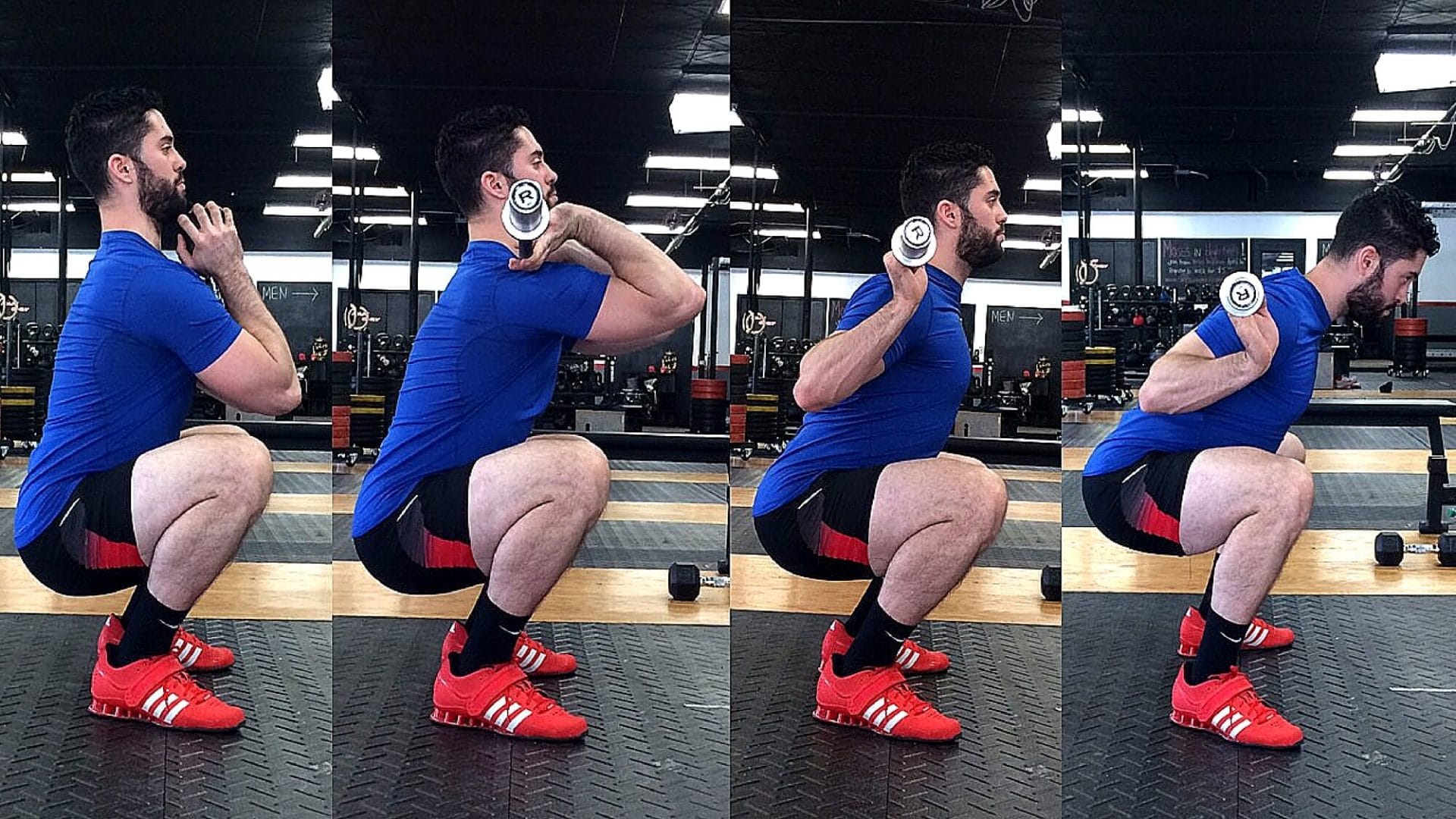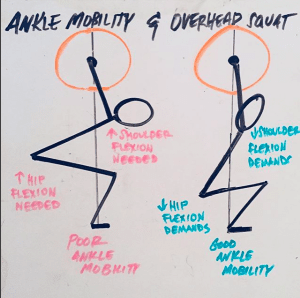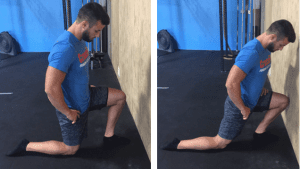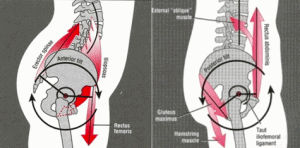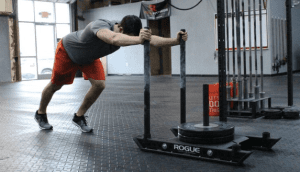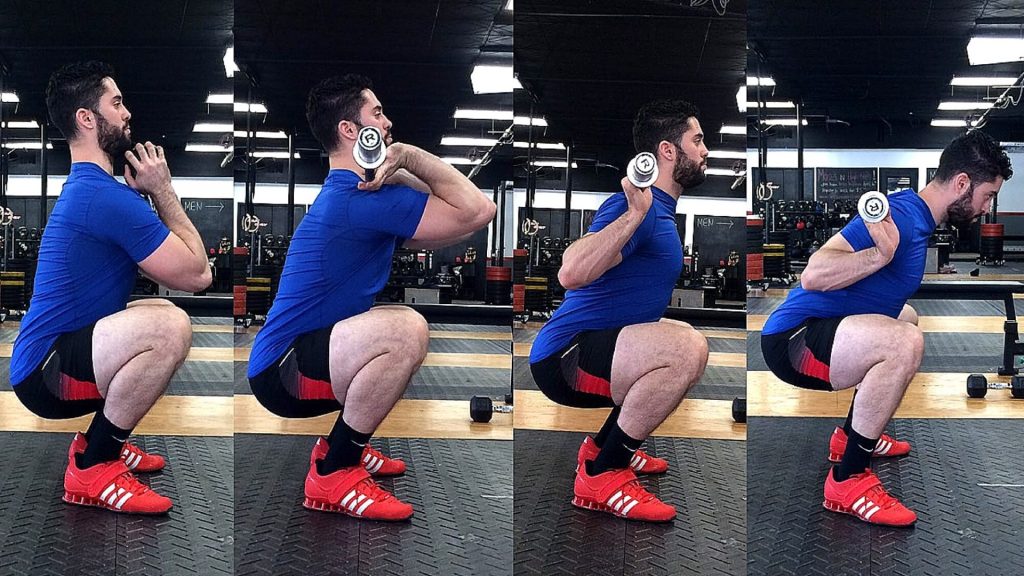The squat is the king of all exercises, unrivaled in its ability to build explosive hip strength, power, and develop athletes. But many athletes develop hip pain during squats making performing them near impossible. And when they seek treatment for this, they’re commonly met by medical professionals who don’t understand squat mechanics and waste time on treatments to address hip flexor tightness rather than things that will create changes in their squat symptoms.
A better understanding of the causes of hip pain and pinching during squats will allow many athletes to overcome this barrier to the high-performance benefits of the squat without pain.
Note: if you need significant squat mobility help, please check out my SQUAT MOBILITY OVERHAUL PROGRAM.
Causes of Hip Pain During Squats
Hip pinching and hip pain during squats can come from mobility, technique, and bone abnormalities. Using the below tests, we can start to get a better understanding of why you might be experiencing your symptoms.
Ankle Mobility
Specifically, dorsiflexion is the cause of many movement pattern faults. If an athlete is trying to squat to depth and lacks ankle dorsiflexion, then that motion has to be made up somewhere else. This usually becomes the hips! This often leads to people with ankle restrictions having hip pain during squats.
This image from Whiteboard Daily illustrates this point. The left stick figure has restricted ankle mobility, forcing the torso to lean forward and the hip to move through more range of motion. On the right, the stick figure can drive his knees forward, resulting in a more upright torso and less hip flexion needed.
How do you know if ankle mobility could be contributing to your hip pinching during squats? We’ll test this by getting into the bottom of a lunge with your big toe one hand-width away from a wall or box. Next, push your knee forward while keeping your heel flat on the ground. If your knee can touch the wall they ankle mobility is not an issue. If you fail, we may need to address it.
In those that do not pass this test, it is important to distinguish between soft tissue and joint limitations, decreasing ankle mobility. Joint limitations are the cause of athletes who feel a “pinch” in the front of the ankle. Soft tissue limitations that are felt in the calf muscle and Achilles tendon. This will be important when it comes to corrective exercises.
Hip Mobility
Most commonly, hip rotation (both internal and external) is another common cause of hip pain during squats. To assess, we have the athlete lie on his or her back with the thigh positioned vertically, and the knee bent to ninety degrees. When testing external rotation, the foot is moved inwards while keeping the thigh vertical. To test internal, the foot is moved outward. We ideally would like to see 45 degrees of external and 30 degrees of internal rotation.
Poor Midline Stability
Poor midline stability during the squat can be a recipe for anterior hip pain during squats. Whereas going into excessive posterior pelvic tilt and lumbar flexion at the bottom of the squat (aka “butt wink”) puts unnecessary stresses on the lumbar spine, staying in excessive ANTERIOR pelvic tilt and lumbar hyperextension can cause anterior hip pain during squats.
Why does this happen? Instead of effectively engaging and bracing the core in the 360° manner, the athlete will just “arch” the low-back. Relying solely on lumbar hyperextension as a means of core stability encourages excessive anterior pelvic tilt, can limit the efficient squat depth, and can cause the bones of the hip to pinch the soft tissues resulting in pain. Remember this the next time you hear that overused and often misguided “arch that back!” coaching cue.
Boney Anatomy
For some, boney abnormalities can result in a physical block to getting into deep hip flexion and cause pain during squats. This is known as femoral acetabulum impingement (FAI). A review by Frank et al. (2015) showed that up to 50% of athletes had FAI development on x-ray analysis. Other research has shown that FAI is very common, even in individuals with NO PAIN!
In the author’s’ experience, FAI causing hip pinching during squats can often (but not always) be corrected by addressing the above mobility limitations and perfecting squat form (and occasionally taking some time off to allow the hip to calm down).
Hip Flexors
We’ll often hear athletes complain of “hip flexor pain when squatting” and believe that hip flexor tightness might be contributing to their symptoms. But it is important to note that the hip flexors are shortening as we squat, meaning that tightness is not likely they are actually having hip flexor pain when squatting and instead the anterior joint is what is irritated.
FIXING HIP PINCHING DURING SQUATS
Ankle Mobility
As mentioned before, one common cause of hip pinching during the squat is limited ankle dorsiflexion. This impaired motion can be the result of soft tissue mobility restrictions in the calf muscle or limitations in talocrural joint motion
This banded mobilization is a great way to address ankle mobility restrictions. For a more comprehensive plan, see our Ankle Mobility Overhaul program.
Hip Rotation
Hip Rotation restrictions tend to be the most common limiters of hip mobility. While hip external rotation mobility fixes are often used by athletes (such as this one), we more commonly find that correcting hip internal rotation deficits will have more significant and longer-lasting effects. A detailed plan to correct hip internal rotation deficits can be found in the article “The Truth About Squat Depth, Injury Prevention, & The Knees Out Cue.”
Alter Your Form.
Sometimes altering your form is all you may need to rid hip pinching during squats. When it comes to squat form and hip pain, there are generally two recommendations that can be made:
Find YOUR Right Stance.
Many coaches believe that all athletes should squat with a specific set-up. The commonly recommended stance is shoulder width with toes pointed straight forward.
But the truth is that all athletes should have a different squat set up based on their specific anatomy. People successfully squat very heavy weights, pain-free, with a variety of stance widths and degrees of toe-out. One thing these lifters have in common is that they have found the squat stance right for THEM.
Experiment with changing your stance width and toe-out angle. Find a stance that is right for YOU.
Tests such as the following can be helpful in determining optimal squat stance.
Ensure Correct Knee Position.
Correct knee position is imperative to reduce hip pinching while squatting. Contrary to popular belief, the correct knee position is NOT simply “shoving them out” as far as possible, as this may exacerbate your pain. The correct knee position involves ensuring that they are in line with the 2nd toe to prevent hip internal rotation at the bottom of the squat. Optimize your knee position to reduce hip pain during squats.
Core Stability and Motor Control Fixes
For athletes needing to develop better core control, we use 90/90 breathing, and the psoas march to help them relearn neutral spine positioning.
90/90 breathing gets athletes understanding how to coordinate muscle contraction throughout the core (including the diaphragm) to stabilize the spine and pelvis during squats.
The psoas march gets the athlete using a reverse squat pattern while focusing on core and pelvic positioning.
Now that the athlete understands how to coordinate the core musculature to maintain a neutral position, we perform quadruped rocking to practice the squat pattern without gravity and then progress to the goblet squat (more on that later). hip pain during squats
https://www.instagram.com/p/BEtfDmlBE8o/?taken-by=thebarbellphysio
The above core control drills are also part of Master The Squat.
TRAINING THROUGH HIP PINCHING DURING SQUATS
Now, don’t misinterpret what we are preaching here! Hip pinching during squats and the above corrective exercises should NOT stop you from training hard or building strength.
If you are in the category of athletes that need to avoid squatting for a certain period to allow the hip to calm down, you can still push your performance to the next level. Heavy emphasis on training the muscles of the posterior chain (glutes, hamstrings, and lower back) will be hip-pain friendly. Exercises like Romanian deadlifts, kettlebell swings, and hip thrusts will strengthen the posterior chain while teaching the athlete to be stronger in a posteriorly tilted pelvic position so when squats are resumed, the athlete can perform squats with the pelvis in a more neutral position.
To continue building quadriceps strength in these athletes, we program difficult quad exercises like sled pushes/pulls, step-ups, lunges, and Bulgarian split squats will continue building athletic strength and power without further irritating the hip.
SQUAT VARIATION PROGRESSIONS
There are numerous variations of the squat, and due to different mechanics, each variation will stress the musculature and joints in a different manner. A more upright torso, typically seen with goblet squats and front squats, will challenge the quads to a greater degree but require more knee and ankle range of motion. A more bent-over torso, as seen with the low-bar back squat will challenge the posterior chain to a large degree, but also requires more hip range of motion.
After assessing and correcting ankle and hip mobility restrictions and enhancing core stability, it’s time to begin squatting again…but where do you start? For someone who has a history with hip pain, it is recommended to begin with variations that promote a more upright torso and progress to more inclined torso variations. Squatting with an upright torso tends to be less stress on the hip joint, effectively giving it “more room to breath.” Once this position is mastered, we can begin to progress as followed:
Goblet Squat —> Front Squat —> High-Bar Back Squat —> Low-Bar Back Squat
Goblet Squat
The goblet squat represents a fantastic exercise to essentially “retrain” the squat pattern. This squat variation keeps the torso vertical and weight lifted lighter. Because of that, this variation is the least stress on the hip joint and a great starting point for those who previously experienced hip pinching during squats. We often perform these as eccentric isometrics. By doing these slowly and pausing at the bottom, we will further enhance the effectiveness by improving motor control
Front Squat
After mastering the goblet squat, it’s time to reintroduce the barbell and begin front squats. Although the form is very similar to the goblet squat, the front squat allows for much heavier loading. Due to the relatively upright torso, this variation will be a great way to return to your Olympic lifts. Progressively loading the front squat in a PAIN-FREE MANNER, represents the next progression in the continuum.
High-Bar Back Squat
After one can successfully front squat pain-free, the high-bar back squat can be initiated. Due to moving the bar from the front rack position to the upper traps, the high-bar back squat will require more forward lean to center the barbell over the midfoot. The more forward lean that occurs, the more “hip intensive” the exercise becomes. For those of you who train the Olympic lifts, the high-bar back squat may be the final squat variation you perform. However, if you are into powerlifting or train “The Big 3” in general, we still have one more step…
Low-Bar Back Squat
The low-bar back squat represents the most “hip intensive” squat variation. For those who suffer from hip pain during squats, the low-bar variation is often the most troubling. The accentuated forward lean of this exercise essentially “closes off” the hip joint. Without adequate mobility, stability, and core control, the low-bar squat has the most potential to flare up the hips. Thankfully, with the tips provided in this article, you no longer have to worry about those issues! Once you can successfully perform low-bar squats without hip pinching, progressively load this exercise and break some PRs!
This article was co-written with Michael Mash of www.barbellrehabandperformance.com. Be sure to follow Michael on Facebook and Instagram for more great content!

